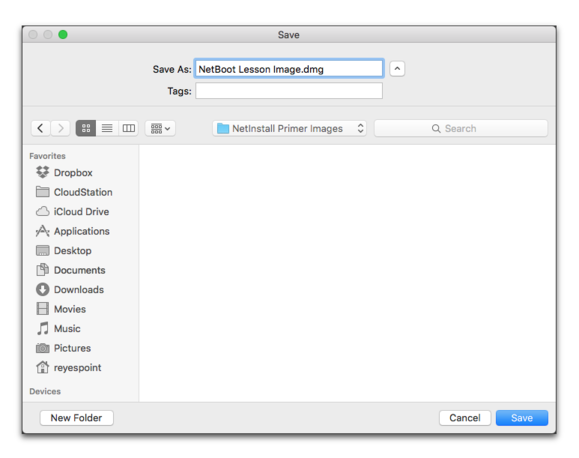Software To Create A Netboot Image For Mac
Posted By admin On 14.12.18Creation of a NetBoot image is virtually identical to that of a NetInstall image (outlined above), except in step #6, where you would select the NetBoot Image radio button, and then click Continue. What makes AutoDMG so great for Mac admins is that you can install software or bundle apps with the image so if you want to include Dropbox or any required printer drivers in the image, you can.
I am on a 10.7.3 Mac with the Lion 10.7 installer. I opened the package as described and selected source to create the Netboot file, but it is failing every time.
I was able to do it fine on this same machine with the 10.6 install CD.
Netboot Image
In this instructable, I'm going to demonstrate to you how to setup your Mac to allow any other Macs on your network to boot from it. Apple actually put all the pieces into the operating system to do this! All you really need to do is set it up. Once this is done, it's automatically turned on and managed by the Operating System. This can be convenient for installing updates, new OS's or performing diagnostics/repairs. My process of accomplishing this will, as often as possible, use the GUI utilities available. Much of it can also be done using command-line instructions, but in my opinion, leaves too much room for errors.
How To Build Mac Netboot Image
I'm definitely not the first to accomplish this and without the information from others that have, it would have taken me forever to figure out. Nor am I attempting to steal the glory from others that have published processes to do this. Free email client for mac.
While most of this information is available elsewhere, I am attempting to put it all in one place and make it possible for less experienced users to accomplish. Direct references to all of my sources will be in the. Also, be sure that you have a license to support any OS or software that you serve to cover all the computers on your network. It's important, before you start that you already have a working network with a DHCP Server. A router supplying all of your computers access to the Internet will suffice. This could also be another Server on the network as long as it is not supplying NetBoot services. Only computers connected directly to the network through Ethernet will be able to boot off of the network.
Computers that normally connect with a WiFi adapter (Airport) will have to be connected physically with an Ethernet cable before using the NetBoot facilities. While all the necessary components are already present to accomplish NetBooting, there are some programs that will make its use and configuration a lot easier. Download and install Apple's Server Admin Tools available from. At this time you will only be using the System Image Utility from this package, but some of the others may become useful in the future.
Also, if you haven't already; Install the Developer's Tools from your current OS X Install DVD. This will install a few tools you'll find quite useful. We need the Property List Editor in this Instructable. If you haven't enabled your Root User account, you will need to do this now.
I'm going to show you how using the utility NetInfo Manager since we will be using this same utility for the next few steps. Locate and open NetInfo Manager from the Utilities folder located in your Applications folder ( picture 1). Pull down the Security menu and select Authenticate. ( picture 2) or click the lock in the lower-left corner. Enter your Administrator password when requested.

Return to the Security menu and select Enable Root User ( picture 3). You will be asked to supply a new password for this account. Use a unique and strong password here as you really don't want anyone else messing around in this account! Once this is done, quit out of NetInfo Manager. All configuration must be done from the Root account.
Software To Create A Netboot Image For Mac Os X
Otherwise, file permissions won't be set properly. Logout of your current account by selecting Log Out. From the Apple menu or entering Command-Shift-Q. When the Login window appears, enter root as the account name and the password you setup in the previous step. Once logged in, if you took my advice in the previous step, you'll see the Admin Tools in the dock.